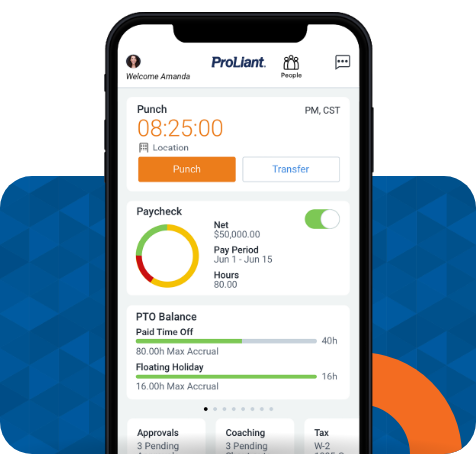After the CARES Act passed Congress, employers flocked to the $669 billion Paycheck Protection Program (PPP) loan program, attracted by a source of funding that — if used correctly — would function more like a grant than a loan. Unfortunately, the Small Business Association (SBA) offered little guidance at the time on what stipulations there would be for loan forgiveness.
The SBA clarified many of these questions when it released the PPP loan forgiveness application. The passage of the PPP Flexibility Act (PPPFA) also fixed some of the outstanding issues.
However, plenty of unanswered questions remain.
In this article, we’ll cover:
- Some of the issues, concerns and surprisesthat haven’t yet been addressed
- How employers can maximize their loan forgiveness even if they haven’t maintained their headcount levels
- The general approach employers should take to ensuring compliance
Loan forgiveness at a glance
Here are some of the key characteristics of the PPP loan forgiveness program as of this writing:
- Up to 40% of the loan can be spent on non-payroll costs (rent, qualified mortgage interest and utilities) and the loan will still be eligible for forgiveness.
- The loan’s covered period lasts 24 weeks, or until December 31, 2020; whichever comes sooner.
- If a borrower took out a loan before the enactment of the PPPFA, they can still elect to have their covered period last for the original 8-week span.
- Payments on portions of the PPP loan that aren't forgiven can be deferred until the SBA compensates the lender for forgiven amounts, unless the borrower has not applied for forgiveness before 10 months after the end of their covered period.
PPP surprises and outstanding questions
Even though the PPFA fixed many of the problematic aspects of the PPP, some elements of the loan forgiveness process still took borrowers by surprise — notably, the sudden switch to a 40-hour full-time equivalent (FTE) definition and the lack of guidance on furloughed employees.
Wait — an FTE is 40 hours now?
Because the principal goal of the PPP loan program was to ensure that employers could retain and pay the wages of their employees, the amount of the loan that may be forgiven is dependent on the number of FTE employees on payroll.
The text of the CARES Act, however, never explicitly defined an FTE. Many business owners reasonably assumed that the CARES Act definition of an FTE would match the widely used definition seen in the Patient Protection and Affordable Care Act (PPACA), which defines an FTE as the equivalent of 30 hours a week.
Businesses that applied for a loan based on the 30-hour FTE have now been forced to calculate what percentage of their loan is forgiven based on the 40-hour FTE.
Thus, if a business’s employees worked more than 30 hours but less than 40 hours in a week, suddenly it appears as though they’ve reduced their headcount and will be on the hook for an additional portion of the loan.
Furthermore, the PPP Forgiveness application introduced the concept of a Simplified FTE calculation method, where an employer would count every part-time individual working less than 40 hours per week as 0.5, regardless of the amount of hours they’ve worked or been paid. The new FTE calculation method should force many employers to evaluate their FTE calculations using this Simplified method vs. the original FTE calculation method.
What’s the relationship between furloughed employees and FTEs?
In lieu of layoffs or termination, some businesses may have furloughed their employees — meaning they're not paying employees for their leave. However, many employers continue to pay for health insurance premiums and other benefits.
As written, the loan forgiveness application doesn’t offer clear guidance on whether furloughed employees are included in the company's FTE count. The PPP loan was clearly meant to be applied to all payroll costs, not just wages; does this mean that employees receiving benefits but not wages contribute towards your loan forgiveness? Absent further guidance from the SBA, it looks like businesses will have to assume that employees furloughed in this way won’t count towards their FTEs.
But under certain circumstances, there may be a way to avoid the resulting reduction in loan forgiveness regardless, particularly if your business hasn’t been able to rehire laid-off employees or been negatively affected by following regulatory guidance.
Good news for employers with (re)hiring issues
Until recently, some of the CARES Act’s other provisions interfered with the intended functionality of the PPP loan forgiveness system.
Because the CARES Act significantly boosted unemployment benefits, employees who were laid off prior to receiving your PPP loan may be earning more than when they were working. Rehiring those employees after receiving your loan could be challenging. Since a portion of the original loan forgiveness calculation was based on the difference between your current FTE count and that count as of February 15th, this would put you on the hook to pay back more of your loan, simply because the CARES Act made it less attractive to work for you.
Fortunately, this issue was quickly resolved with the passage of PPFA. You don’t have to base your loan forgiveness on FTEs under two circumstances. A reduction in FTE count will not impact loan forgiveness if:
- You are unable to return to the same level of activity (and therefore the same level of staffing) because you followed requirements for "sanitation, social distancing, or other work/customer safety requirements related to COVID-19" between March 1, 2020, and December 31, 2020.
- You were unable to rehire individuals who were employees on February 15th or if you were unable to hire similarly qualified employees by December 31, 2020.
These safe harbor provisions make it clear what employer’s number one priority should be in navigating the PPP loan forgiveness process: Documentation.
Why you should focus on documentation
According to the SBA loan forgiveness application, in order to prove that you were unable to rehire an ex-employee, you’ll need to document that you made:
...a good-faith, written offer to rehire an employee during the Covered Period or the Alternative Payroll Covered Period which was rejected by the employee.
When offering to rehire an ex-employee, you’ll want to make a record of any emails or other correspondences describing your offer. You may even want to consider sending them a job offer through a certified letter. If they decide to reject the offer, then you can include their contribution to your FTE levels as though they were still on payroll.
You’ll also want to preserve any records demonstrating that you attempted to hire employees of similar skill levels, such as resumes, applications, job postings and so on. Furthermore, you should retain any documents relating to your compliance with the regulations issued by the various government agencies listed previously.
In fact, you should just document everything.
Consider the following passage from the loan forgiveness application:
All records relating to the Borrower’s PPP loan, including documentation submitted with its PPP loan application, documentation supporting the Borrower’s certifications as to the necessity of the loan request and its eligibility for a PPP loan, documentation necessary to support the Borrower’s loan forgiveness application, and documentation demonstrating the Borrower’s material compliance with PPP requirements. The Borrower must retain all such documentation in its files for six years after the date the loan is forgiven or repaid in full, and permit authorized representatives of SBA, including representatives of its Office of Inspector General, to access such files upon request.
Six years is a long time to hang onto all of those documents. The implication here is that the government intends to follow up with borrowers to ensure that the money it lent to businesses was used in accordance with its intent and for those who were in need.
The application lists a fairly broad scope of documentation that you may be required to furnish to the Inspector General; if you want to be in compliance and avoid any nasty surprises down the road, the safe bet is to over-document. To learn more about the implications COVID-19 is having on Payroll, check out our recent webinar.
Adopt a payroll solution that makes this easy
Retaining these records is key to establishing an audit trail. But it can be challenging to consistently manage that data over such a lengthy time frame.
If you are looking to change payroll providers, use this opportunity to thoroughly review implementation practices — is data migration easy? Will my new payroll company migrate all of the data on my behalf? Does the new system possess robust record-keeping capabilities?
It's easy to put these considerations on the back burner, but there will always be more payroll events that require documentation. Now may be a good time to look for payroll tools to support you in your efforts towards compliance and accuracy.
Ensuring payroll compliance can be challenging even in the best of times, but we’re in uncharted waters now. Don’t hesitate to talk to one of our experts about staying compliant, even in the face of ambiguous regulations.





No Comments Yet
Let us know what you think